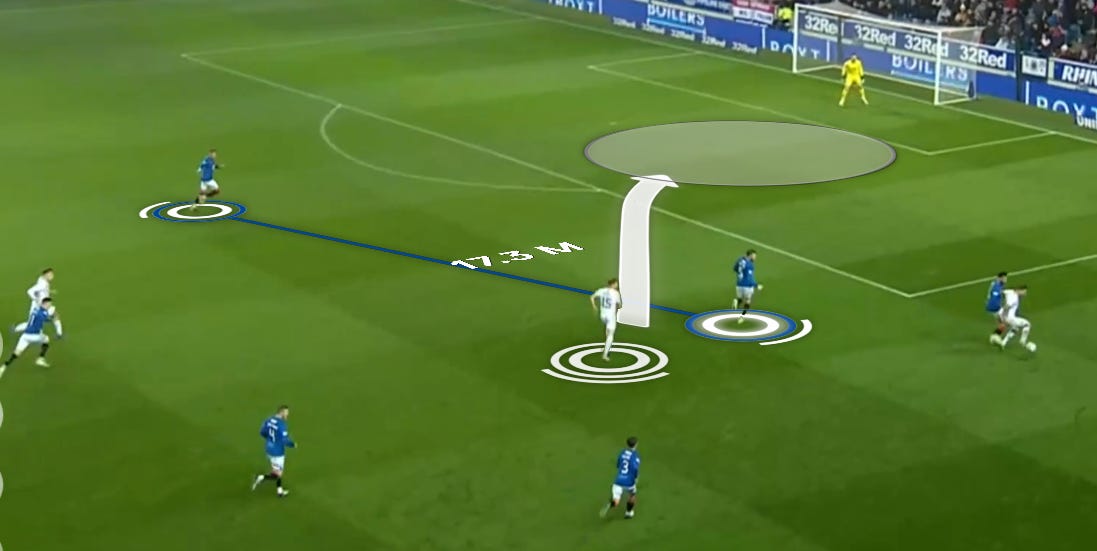Rangers v Celtic Preview Part 1
The top two in Scotland clash this weekend, we take a look at their strengths and weaknesses, starting with this year's challengers.
Three defeats in the first seven matches of this season, was enough for the hierarchy at Ibrox to remove Michael Beale as manager. They moved quickly to install Phillippe Clement who had success in his native Belgium, winning the league three seasons in a row with two different clubs in Genk and Club Brugge. An 18-month spell in Monaco followed where he delivered an impressive third place in the second half of the 2021-22 season, however, a 6th place finish and missing out on Europe made the club remove him as head coach the following season.
Has the team improved under Clement?

Looking at the above trendline from the start of the season, it is clear that Clement has improved the team from a defensive perspective, given the fall in xG conceded. Interesting, the average xG has remained the same meaning the attacking output has not change much on average since Beale was manager. That being said, their xG is on the higher end of the league average around 2 per game.
Clement has implemented his style on the team since arriving and improved the playing squad with players like Mohamed Diomande, signing on loan from FC Nordsjaelland. He has made a positive impact to Clements style by playing in a double pivot alongside Lundstrum, giving them better defensive protection and balance than Jose Cifuentes was providing under Beale. As well as the arrival of Fabio Silva on loan, giving them more mobility and a threat on an opposition’s goal.
Strengths
Rangers’ captain James Tavernier provides a lot of attacking threat down the right side of the field and he enjoys arriving late into the box to get on the end of a deep cross ball from the opposite side. He executes the minimum width strategy well, using his pace and awareness, something that is normally tasked to wingers in the modern game.
Another strength that Rangers have is their use of player rotations. Similar to what Ange Postecoglou created at Celtic, Clement looks for his midfield and attacking players to rotate (i.e swap) positions, to disrupt the defence and create pockets of space in the final third. Also, they will aim to try and create numerical advantages in areas of the field, known as an overload. This helps them retain possession and progress the ball up the field, closer to goal. Celtic will need to be alert to these movements and perform player handoffs perfectly to prevent Rangers breaking through their line.

Lastly on their strengths, Rangers are comfortable with a patient build up play from the back, with Lundstrum dropping between the centre backs to let the full backs move forward into the midfield lines, creating overloads in the central area of the field. The Rangers captain regularly drops into midfield and looks to get on the ball in this area, with plenty of space around him or hoping to draw the left back in field, creating space for their winger to attack. Rangers focus on the need to create positive overloads in all areas of the field where the ball is, as Cantwell is doing below.


Weaknesses
Reviewing a lot of footage over the past 5 games, it is clear to me that Rangers struggle in their defensive transition. They have conceded goals in games against Benfica, Hibs and Ross County during this transition and there appears to be a lack of defensive structure in these moments, with many players having to try and recover to stop the opposition getting into the box. This is an area Celtic will look to exploit this weekend by playing a quick progressive pass through Rangers’ line of pressure to create an overload in final third. Similar to what Hibs achieved at the weekend, as shown below.

Another weakness spotted is the fact that Tavernier is very attack minded, this can leave the centre backs of Souttar and Goldson exposed when under pressure from the opposition. The Rangers captain does have recovery speed, but this appears to be not as quick as previous season’s and he has struggled in key moments to track and contain players. Again, this is an area that Celtic will aim to expose in transition, using the pace and power of Maeda and the clever movement of Kyogo to get into this area behind the defensive line. Rangers may look to drop Lundstrum or Diomande into a screen in front of the centre backs when Tavernier is more advance.

Summary
To conclude, Rangers will be looking to play with the strengths in the game on Sunday, and they will be provide a threat to the Celtic goal using the tactics mentioned above. As the game is at home, they will look to take the game to Celtic from the referee’s whistle. However, they will need to be mindful and structured quickly at turnovers as Celtic have players who can break quickly and take advantage of a poor defensive transition. It has all the makings of an interesting tactical battle.
Part 2 on Celtic’s strengths and weaknesses to follow tomorrow.






